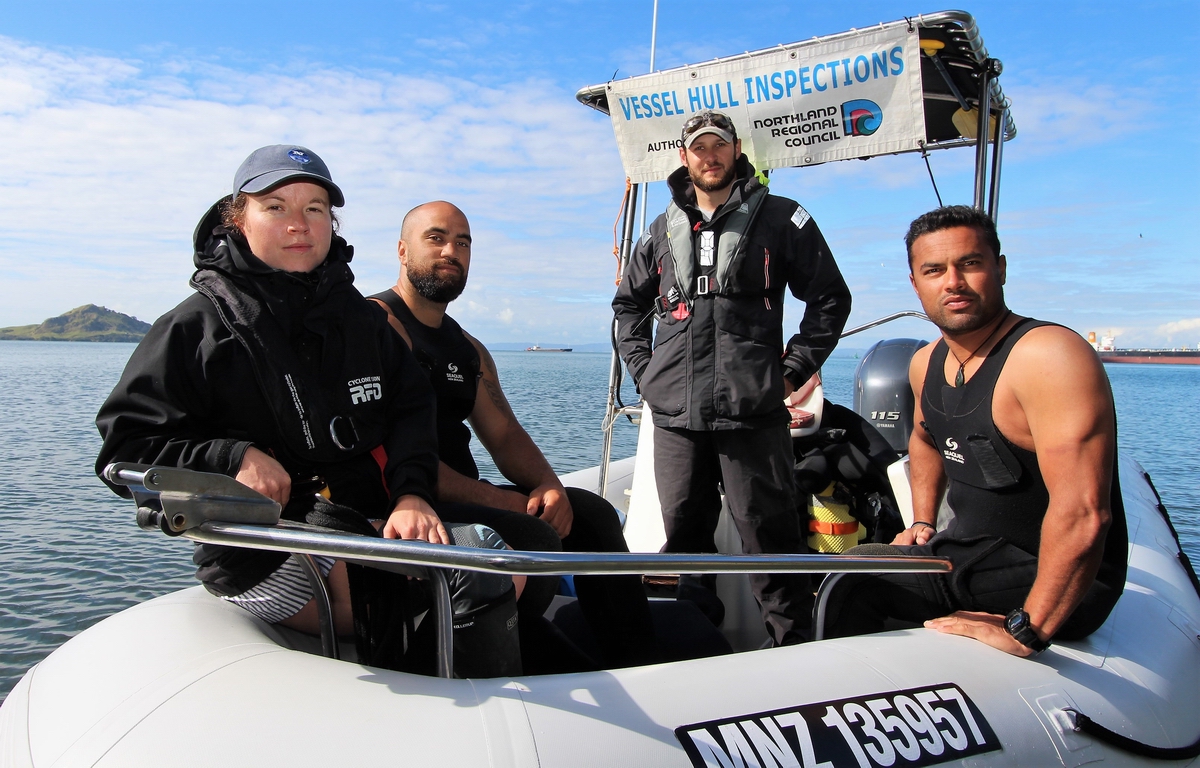Divers resume boat hull checks for marine pests
29 Oct 2018
An estimated 2000 boat hulls will be checked by divers between now and May next year for a range of unwanted marine pests threatening Northland’s precious marine environment.
Sophia Clark, Biosecurity Manager – Marine & Strategy, for the Northland Regional Council, says Northland-based dive contractors Marine Environmental Field Services officially began the 2018-19 inspection programme in Whangarei Harbour in mid-October.
“We’ve been carrying out these hull inspections for several years now and are especially keen to ensure vessels are free of marine pests before their owners start travelling to new areas with the onset of warmer summer weather.”
Ms Clark says last inspection season contractors checked the hulls of 2000 vessels; everything from recreational boats to superyachts and fishing vessels to barges.
With pests like Mediterranean fanworm now established in Whangarei Harbour and recently discovered in Opua, the owners of vessels travelling from these areas to other spots are being urged to be extra vigilant.
She says as well as rules covering transportation of marine pests, the council now has new rules limiting the amount of ‘biofouling’ (build-ups of microorganisms, algae, plants and pests) vessels can be carrying when they enter new spots.
“Vessel hulls are the most common way that marine pests hitch a ride from one place to the next and our new Marine Pathway Management Plan aims to manage this issue.”
Under the plan, any vessel entering Northland waters or moving from one harbour to another must have no more than ‘light fouling’, defined as a slime layer and/or barnacles and a few patches (up to 100mm in diameter) of macrofouling.
“Marine pests can hitchhike and hide within boat fouling, so preventing the movement of affected vessels is the best way to stop the spread of marine invaders.”
Ms Clark says the owners of vessels found with more than light fouling will be notified so they can ensure the vessel is clean before moving to a new area.
“If a pest species is detected, owners will be asked to haul the vessels out and clean or treat them in what can potentially be a costly process. A $500 fine may also apply.”
Ms Clark says while no-one can afford to drop their guard when it comes to marine pests, the council is very appreciative of the steps many are already taking and has been impressed by a noticeable change in the attitude to boat cleanliness in recent years.
“Over the last few seasons of hull inspections there’s been a huge behaviour change in visiting vessels ensuring they are clean when entering Northland.”
“As an example of the 140 vessels inspected over the last Christmas period, just two had a marine pest species present.”
Those pests had been concealed in ‘niche’ areas on the vessels, which require special attention when applying antifouling or during a ‘lift and wash’ period.
“Council strongly suggests double-checking these niche areas, like the base of the keel, behind anodes, and bow thrusters before your vessel goes back in the water.”
Ms Clark says the council has also had great support from Northland’s marina operators.
“Marina operators have already been requiring a receipt proving a vessel conforms to what’s been dubbed the ‘six or one’ initiative; being either antifouled within six months of leaving a known fanworm-infected area or having undergone a ‘lift and wash’ within one month of leaving an infected area like Auckland.”
She says more information on the council’s rules and requirements can be found at www.nrc.govt.nz/marinebiosecurity

Northland-based dive contractors Marine Environmental Field Services began checking vessel hulls for marine pests again recently. Team members, from left divers Emma Kearney and Corey Dalley, skipper Lars Vogel and diver Brett Sutton expect to inspect roughly 2000 hulls in most mooring areas and popular anchorages between now and mid-May.
